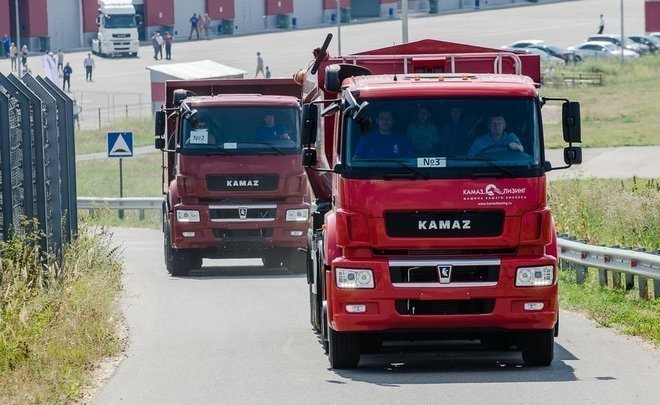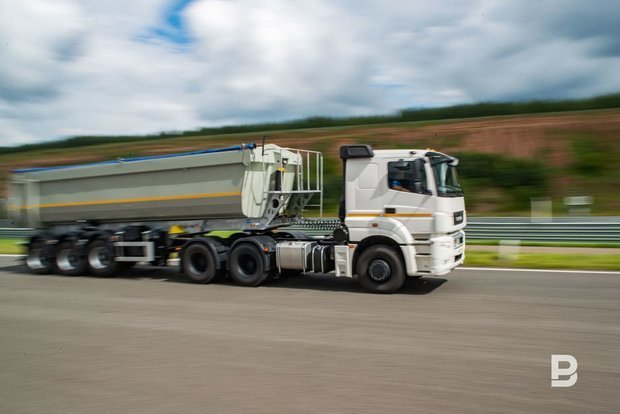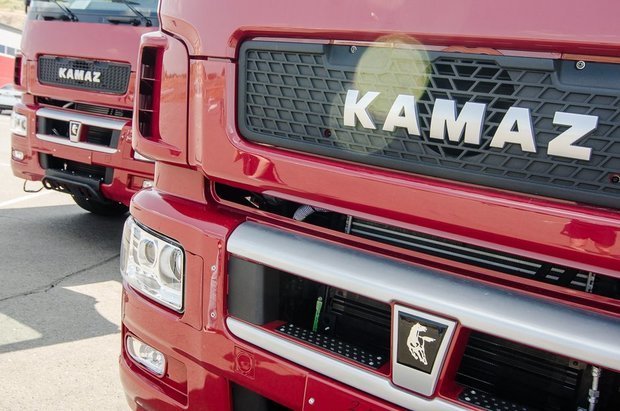Sergey Sotnikov, CCI: ‘It’s hard to find a new KAMAZ on the market right now’
Russian logistics operators have refocused on the Chinese and the automotive industry, while Tatarstan complain about the shortage of cars

“So far we are selling at the old prices, excluding recycling fee," the dealerships of Chinese brands in Kazan say. Since August 1, the recycling fee for cars imported into the country has risen, and the price increase may hit Chinese heavy trucks the hardest. Logistics operators are going to take advantage of the price advantage, having decided to purchase trucks of KAMAZ-54901 model. At the same time, the head of the Committee on cargo transportation of the Chamber of Commerce and Industry of the Republic of Tatarstan, Sergey Sotnikov, complained about the shortage of cars: “There are practically no KAMAZ truck tractors on the market for free sale.”
Chinese truck dealers keep “old” prices
New recycling rates for imported foreign cars came into force two weeks ago, but the same prices continue to apply in Tatarstan dealerships Sitrak, Shacman, FAW, and Howo. For example, the federal network of service centres Clever Park informed Realnoe Vremya that new prices are being negotiated, the price list has not yet been approved.
“The increase will occur exactly as much as indicated in official documents," they explained in the sales department of commercial equipment, refusing to name specific values.
If we focus exclusively on the rates of recycling, then the increase will occur within 700 thousand rubles. As follows from the decree of the government of Russia, if until now the recycling fee for cars with an engine capacity of 3,5 litres was 445 thousand, then since August 1 it has risen to 1,235 million rubles. In other words, for legal entities, it was indexed almost 3 times. For individuals, the indexation occurred at times — from 3,400 rubles to 1,235 million rubles.

Let us note that for trucks with an engine capacity of more than 3,5 litres, the rates of recycling fee are set the highest. They include the five most popular brands of Chinese trucks on the Russian market — Sitrak, Shacman, FAW, and Howo, whose engine capacity varies from 6 to 12 litres. For domestic manufacturers of trucks with comparable engine capacity, the budget compensates for the payment of recycling fee.
For comparison, the size of recycling fee for passenger cars, depending on the engine volume, will grow by 1,7-3,7 times, for light commercial LCV models — by 2,5-3,4 times, for buses — by 2,2-4,8 times, and for electric buses — by 8,7 times. The rate increase have not affected only electric vehicles. “The increase in rates will affect both new and used cars imported by legal entities, but will not affect individuals importing cars with an engine capacity of up to 3 litres for personal use," the Ministry of Industry and Trade of the Russian Federation explained earlier. As a result, the cost of Chinese equipment turned out to be higher than domestic one.
Auto-PEC will try out KAMAZ
Large Russian logistics companies decided to take advantage of the price difference. This year, the multiservice logistics operator Auto-PEC has begun to update the fleet on a planned basis.
“We have already purchased 20 Chinese tractors of Sitrak and Foton brands. We are also considering the purchase of equipment from the largest domestic manufacturer — KAMAZ: this year we plan to purchase 10 tractors of the KAMAZ-54901 model. This is going to be the first deal for the purchase of domestic trucks by our company in the last five years," Dmitry Ievlev, the company's CEO, told Realnoe Vremya. “We have to assess how reliable the trucks are in operation, whether they are convenient to manage, with what frequency repairs will be required, what is the cost of maintenance.”

The renewal of the fleet was required due to that the company launched combined cargo transportation between Russia, Kazakhstan, and Kyrgyzstan, and also opened a branch and warehouse in Bishkek. “The demand for the delivery of goods between Russia and Kyrgyzstan continues to grow. Therefore, by the end of 2023, we plan to increase the number of flights between Russia, Kazakhstan, and Kyrgyzstan, as well as launch a new route to China. Plus, we will start developing an internal route network in Kyrgyzstan to make transportation available not only to the central cities of the republic, but also to small settlements. Through this, we plan to increase cargo turnover in the country by 40% by the end of the year," said Sergey Moiseenkov, the director of franchising at PEC.
We should add that by the results of July, KAMAZ sold 2,6 thousand new cars, exceeding last year's result by 4%. However, among the models, the Sitrak C7H truck remains the leader, which by the end of July was sold in the amount of 2,549 units. “The sales of other models did not reach even a thousand cars, and the top five here include FAW CA3310 (923 units), Shacman SX3258 (640 units), Shacman SX3318 (579 units) and KAMAZ 65115 (510 units)," the Autostat agency reported.
“The amount that KAMAZ produces is not enough for the market”
At the same time, Tatarstan cargo carriers prefer Chinese. “We choose from what is on the market. Now Chinese truck models are most widely represented here, and there are very few KAMAZ vehicles, we can say there are practically none," explains Sergey Sotnikov, the head of the Cargo Transportation Committee of the Chamber of Commerce and Industry of the Republic of Tatarstan, the director of Reverse PLC.
In his opinion, the introduction of recycling fee is an attempt to equalise the cost of Chinese and domestic trucks. “At one time, we had to push the development of the domestic automotive industry, and now we see that as it did not exist and now it also does not exist. I believe that the introduction of a recycling fee is an additional tax. And what's the result? This is a kind of quasi-tax on sales," he said.
Mikhail Levashov, the president of the non-profit partnership Logistics and Trucking of Tatarstan and head of ATL-Trans, believes that the rise in price of Chinese trucks is due to the growth of the yuan exchange rate, and the recycling fee only corrected this growth. “At the beginning of the year, Chinese trucks came at a price of 3,5 million, now — about 8 million rubles. Chinese equipment has risen in price due to the growth of the yuan. The recycling fee did not affect as much as the exchange rate difference," he said. According to the heads of the two associations, Tatarstan carriers prefer to work on foreign cars, as it is difficult to buy a new KAMAZ on the market.

“Any foreign equipment has a VIN number. And we can use it to determine which spare part is installed by the factory, so that we can buy it in stock in advance. And KAMAZ does not have such a thing. Until you take it off, you won't know what part is inside the car. Sometimes the model is the same, but the parts are different. KAMAZ can customise cars with different spare parts. They are not labelled. This is a big inconvenience for operators," he said.
Pros and cons of the Chinese automotive industry
For this reason, many carriers rely more on Chinese equipment, although its survivability statistics have not yet been collected. But recently the Logirus portal has found out its advantages and disadvantages. “Speaking about the shortcomings, representatives of Delko and Intra Logistics highlighted increased fuel consumption — on average 2-3 litres per 100 km more than European tractors. At the same time, Dentro (in the fleet of 20 Dongfeng and Sitrak tractors) did not notice the increased fuel consumption: the technical director of the company, Ilez Khamurziev, said that Sitrak, when loaded with 20 tonnes, consumes 27-28 litres per 100 km, while Scania consumes almost 30 litres," the portal writes. Carriers call the comfort level an indisputable advantage of Chinese cars, which, according to the drivers of one of the companies, turned out to be even higher than that of European manufacturers. Another advantage is the cost: a Chinese tractor will cost 8,5-12,5 million rubles, whereas 'Europeans' today cost from 18 million rubles.”
In the conditions of rising prices, the sales of used vehicles have jumped. And here in the first place it is KAMAZ with a share of just over a quarter (25,5%), Autostat reported. In quantitative terms, this amounts to 28,5 thousand used heavy trucks purchased in six months.